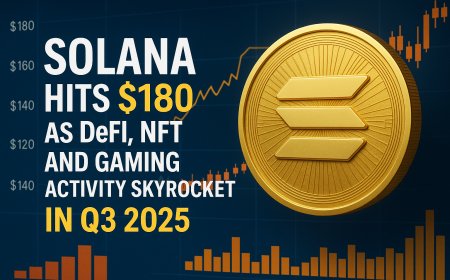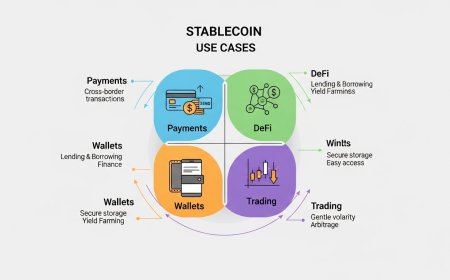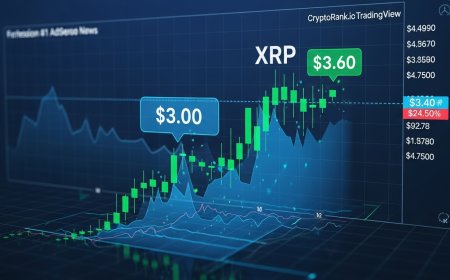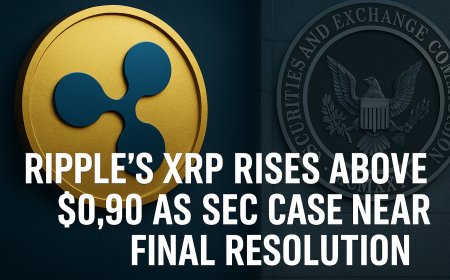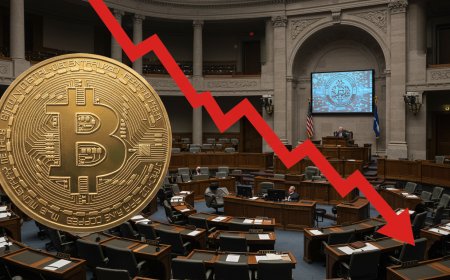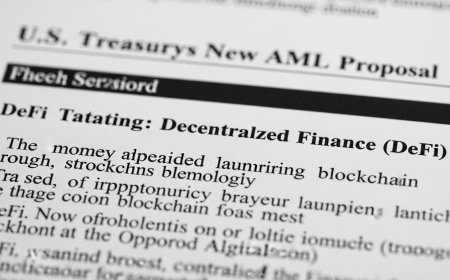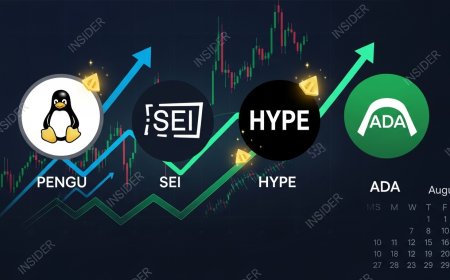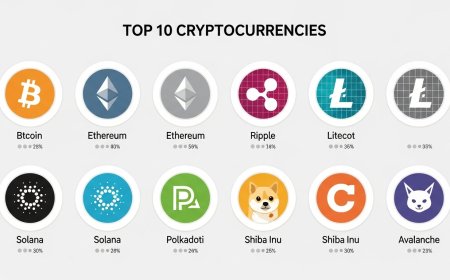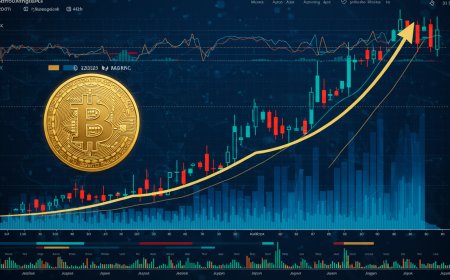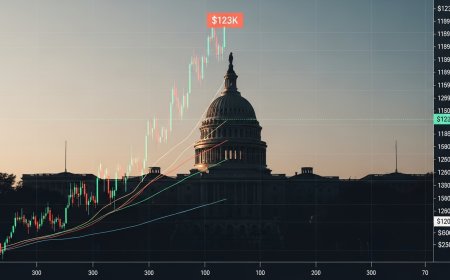Ethereum Surges Above $3,100 as Institutional Demand Reaches New Heights
Ethereum crosses $3,100 as institutional interest surges. Explore what’s driving this momentum, from staking trends to network upgrades and DeFi growth.

Ethereum Surges Above $3,100 as Institutional Demand Reaches New Heights
Ethereum, the second-largest cryptocurrency by market capitalization, has broken above the $3,100 mark for the first time in over a year, signaling renewed momentum and deepening institutional interest. This surge is more than just another bullish price move — it represents a broader shift in how institutional players are positioning themselves around Ethereum’s utility, staking model, and long-term roadmap.
Breaking Resistance: What Happened This Week?
Over the past seven days, ETH has climbed more than 15%, outperforming Bitcoin and the broader altcoin market. Analysts attribute this breakout to a confluence of factors including sustained ETF optimism, renewed inflows to Ethereum-based investment products, and stronger-than-expected fundamentals in decentralized finance (DeFi) metrics.
Technical analysts also point to ETH’s successful breach of its multi-month resistance level at $2,950, followed by strong volume confirmation and increased activity in options markets. According to data from Deribit, call options expiring in the next two weeks have seen open interest double, with a significant chunk targeting $3,500 strikes.
Institutional Money Is Back — and Focused on ETH
While Bitcoin has traditionally attracted the lion’s share of institutional attention, Ethereum is rapidly closing the gap. According to CoinShares, Ethereum investment products recorded $85 million in net inflows last week — the highest since early 2022. Grayscale, BlackRock, and several crypto hedge funds have publicly disclosed increased ETH exposure in their managed portfolios.
Why the shift? Many asset managers now recognize Ethereum’s real-world utility as the backbone of decentralized applications (dApps), NFTs, and DeFi protocols. Moreover, with ETH staking providing passive yield and deflationary dynamics post-EIP-1559 and the Merge, Ethereum offers a fundamentally different value proposition than Bitcoin.
ETH 2.0: The Staking Effect
Ethereum’s shift to proof-of-stake has revolutionized its monetary policy and capital efficiency. As of July 2025, over 33 million ETH — nearly 28% of total supply — is locked in staking contracts. The Ethereum beacon chain continues to show healthy validator participation and network security.
Staking yields currently average 4.3%, making ETH attractive to institutional treasuries and yield-seeking investors. Staking-as-a-service platforms like Lido, Coinbase, and Rocket Pool have seen notable inflows, with institutional custodians offering white-label staking infrastructure for regulated clients.
DeFi Is Quietly Heating Up Again
TVL (Total Value Locked) across Ethereum-based DeFi protocols has grown by 21% month-over-month, reaching $62 billion — the highest since mid-2022. Flagship protocols like Aave, Uniswap, and MakerDAO are seeing increased activity, while newer entrants like EigenLayer and Ethena have captured attention for liquid staking and synthetic stablecoin innovation.
Furthermore, Real World Asset (RWA) tokenization is gaining traction on Ethereum, with protocols like Centrifuge, Maple Finance, and Ondo Finance facilitating the on-chain representation of U.S. treasuries, invoices, and yield-bearing credit products. This emerging trend may be one of the biggest drivers of Ethereum’s institutional narrative.
Proto-Danksharding and Ethereum's Technical Roadmap
The upcoming implementation of EIP-4844 — also known as Proto-Danksharding — represents a pivotal step toward Ethereum’s long-term scalability vision. Expected to roll out in Q3 2025, this upgrade introduces “blobs” for off-chain data availability, drastically reducing gas costs for layer-2 transactions without compromising security.
Developers are optimistic. Vitalik Buterin recently stated, “Proto-Danksharding will take us closer to full sharding while immediately improving rollup efficiency.” Major L2s like Arbitrum, Optimism, and Base are preparing infrastructure to integrate the new blob mechanism, which could dramatically lower transaction costs and expand throughput.
Layer-2 Ecosystem: Scaling Ethereum’s Impact
Layer-2 networks are becoming increasingly central to Ethereum’s scaling roadmap. Arbitrum and Optimism alone have over $19 billion in combined TVL, with thousands of dApps actively deploying across them. Coinbase’s Base has also seen success in onboarding new users thanks to its fiat on-ramps and ecosystem incentives.
These L2s not only reduce congestion on Ethereum’s mainnet but also offer developers greater flexibility in gas pricing, UX optimization, and smart contract experimentation. The result is a more modular and resilient Ethereum ecosystem — one that's being watched closely by venture capital and enterprise partners.
Expert Opinions on Ethereum’s Path Forward
“Ethereum is no longer just a programmable blockchain — it’s becoming financial infrastructure,” said Christine Moy, Head of Digital Assets at Apollo Global Management. “From stablecoins to tokenized treasuries, institutions are building on top of it because the rails already exist.”
Bank of America analysts issued a report this week upgrading Ethereum from “neutral” to “bullish,” citing improved energy efficiency, consistent developer activity, and competitive staking rewards. Meanwhile, Andre Cronje of Fantom remarked that “Ethereum’s L2 strategy is finally working. It's not just theoretical anymore.”
Price Targets and Market Outlook
Crypto research firms are revising their 2025 targets. Galaxy Digital now forecasts a potential ETH price of $4,800 by year-end, assuming continued ETF inflows and successful EIP-4844 deployment. Others, like Delphi Digital, see ETH testing the $5,000 mark in early 2026, especially if Ethereum dominates the RWA tokenization narrative.
However, analysts warn of potential corrections. $3,250 is seen as the next resistance level, with $2,900 serving as short-term support. Macro risks like Fed rate policy, SEC enforcement, and Ethereum developer delays remain key variables.
Conclusion
Ethereum’s rise above $3,100 is more than a technical breakout — it’s a reflection of growing conviction from institutional investors, builders, and users alike. With staking yield, scaling breakthroughs, and real-world utility converging, Ethereum may be entering a new era of dominance in the crypto landscape. The road ahead remains volatile, but the foundation has never looked stronger.
What's Your Reaction?
 Like
0
Like
0
 Dislike
0
Dislike
0
 Love
0
Love
0
 Funny
0
Funny
0
 Angry
0
Angry
0
 Sad
0
Sad
0
 Wow
0
Wow
0

















